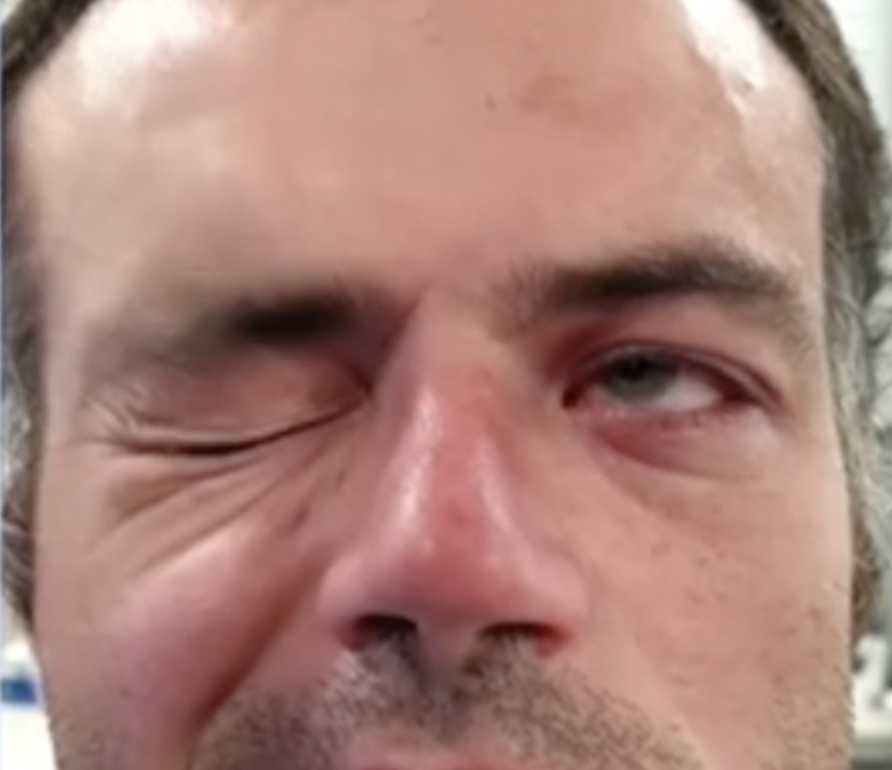Bell’s Palsy is an ipsilateral Cranial Nerve VII (lower motor neuron) palsy. One of the important ways to distinguish it from an upper motor neuron lesion, is that in Bell’s, there is no forehead sparing, as there is in a stroke. This is due to the bilateral upper motor neurone supply of the forehead.
Bell’s Phenomenon, also called the oculogyric reflex, is an upward movement of the eye, when the eyelid is closes. The upward movement of the eye, is a normal reflex and occurs in most people, it’s purpose being to protect the cornea from injury.
It becomes apparent in Bell’s palsy when the eyelid cannot be closed due to insufficiency of the Orbicularis and is then called Bell’s Sign.
The normal movement of the eye is upward and outward. Below is an example of upward and medial displacement.
Source: EMCORE Queensland 2023: Bell’s palsy Dr Will Davies.
Inverse Bell’s phenomenon can also occur and the eye moves downwards.
It occurs:
- Normally
- In Bell’s Palsy
- In Conjunctival Scarring
- In post operative eye surgery.










